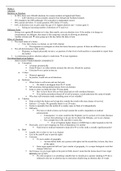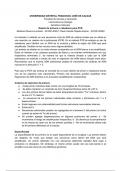Study guide
Abortion
- Cours
- Établissement
- Book
Lecture notes, textbook notes, academic articles and class notes on abortion. From the London School of Economics and Political Science. Emily Jackson textbook and lecture notes. Involves detailed debate on the advantages and disadvantages of de-criminalising abortion. Both a legal and moral perspe...
[Montrer plus]





